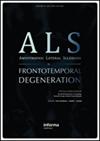主题10 -患者的疾病分层和表型
IF 2.8
4区 医学
Q2 CLINICAL NEUROLOGY
Amyotrophic Lateral Sclerosis and Frontotemporal Degeneration
Pub Date : 2022-11-01
DOI:10.1080/21678421.2022.2120686
引用次数: 1
摘要
背景:COVID-19大流行为加强呼吸监测提供了新的机会,以补充远程医疗服务。肺活量的分层可能允许表征FVC和疾病轨迹群(1)。目的:在这项实施科学研究中,我们评估了在呼吸治疗师指导下使用临床常规(Viaire和Vyasis,美国)、临床便携式和家庭便携式(MIR Spirobank Smart,意大利)肺活量计测量直立和仰卧位FVC的可行性。方法:在这项经irb批准的回顾性研究中,对2020年7月至2021年6月期间在纽约中部开展AHT的单中心22/95名ALS临床患者(23%)的电子健康记录进行了审查。患者平均年龄65岁,男性9例。根据常规方法预测的基线坐位FVC %对患者进行分层:A组FVC >80%, B组60-80%,C组<60%。无法来诊所的患者通过邮件接收肺活量计,随后由呼吸治疗师进行远程培训,无需常规肺活量计。结果:采用Pearson相关系数评价常规肺活量法与便携式体位肺活量法测定肺活量的相关性。采用Bland-Altman分析评估平均差异(常规-便携式),一致性限为95%。同一次就诊期间(N=13)获得的坐式FVC测量与升(R2=0.95, p<0.0001)和%预测(R2=0.952, p<0.0001)高度相关。Bland- Altman分析结果吻合良好,平均差值为0.147L (0.345 ~ 0.639L);预测值为4.154%(8.004 ~ 16.311%)。临床仰卧FVC (N=4)与升(R2=0.987, p=0.007)和预测% (R2=0.987, p=0.007)高度相关,平均差异为0.33L (0.101 ~ 0.761L);预测8.5%(0.043 ~ 17.043%)。AHT 35/52(67.31%)比传统肺活量计9/21(42.86%)更频繁地测量仰卧肺活量。与病人转移相关的安全问题是临床上进行仰卧位试验时最常遇到的障碍。2/22没有远程AHT的患者退出的原因是由于在智能手机上随时查看FVC结果和低基线FVC(预测<50%)而感知到焦虑加重。5/22例患者(其中3例为居家患者)在初始AHT时FVC较低(预测为12-48%),ALS FRSR较低(48例中有14-28例),并且在没有常规肺活量测定的情况下接受了远程AHT训练。一项正在进行的ALS慢肺活量(NCT05106569)前瞻性临床研究将确定在家中使用AHT进行频繁的呼吸监测是否会导致与使用NIV相关的更好结果。本文章由计算机程序翻译,如有差异,请以英文原文为准。
Theme 10 - Disease Stratification and Phenotyping of Patients
Background: COVID-19 pandemic presents new opportunities to augment respiratory monitoring complementary to remote telehealth services. Stratification of vital capacity may allow for characterization of FVC and disease trajectory clusters (1). Objective(s): In this implementation science study, we assessed the feasibility of measuring FVC in seated upright and supine positions obtained with in-clinic-conventional (Viaire and Vyasis, USA), in-clinic-portable and at-home-portable (MIR Spirobank Smart, Italy) spirometers with respiratory therapist coaching. Method(s): Electronic health records of 22/95 ALS clinic patients (23%) from single-center in Central New York that launched AHT between July 2020 and June 2021 was reviewed in this IRB-approved retrospective study. Mean age of patients was 65 years old and 9 were males. Patients were stratified according to baseline seated FVC % predicted by conventional method: Group A, FVC >80%, Group B, 60-80%, Group C <60% predicted. Patients unable to come to clinic received spirometers by mail followed with remote training with respiratory therapists without conventional spirometry. Result(s): Pearson correlation coefficient was used to evaluate the correlation between FVC measurement using conventional and portable spirometry by position. Bland-Altman analysis was performed to evaluate the mean difference (conventional - portable) with 95% limits of agreement. Measurement of seated FVC acquired during the same clinic visit (N=13) were highly correlated in liters (R2=0.95, p<0.0001) and % predicted (R2=0.952, p<0.0001). Bland- Altman analysis showed good agreement with a mean difference of 0.147L, 0.345 to 0.639L);4.154% predicted, (8.004 to 16.311%). In-clinic supine FVC (N=4) were highly correlated in liters (R2=0.987, p=0.007) and % predicted (R2=0.987, p=0.007) with a mean difference of =0.33L, (0.101 to 0.761L);8.5% predicted, (0.043-17.043%). Supine vital capacity measurements were more frequently obtained with AHT 35/52 (67.31%) vs. 9/21(42.86%) with Conventional spirometry. Safety concerns associated with patient transfers were the most frequently encountered barrier in performing supine testing in clinic. Reason for drop out for 2/22 patients with no remote AHT was attributed to perceived aggravation of anxiety from readily viewing FVC results on smartphone and low baseline FVC (<50% predicted). AHT led to prompt initiation of NIV in 5/22 patients, of which 3 were homebound, had low FVC at initial AHT (12-48% predicted), low ALS FRSR (14-28 out of 48) and received remote AHT training without conventional spirometry. An ongoing slow vital capacity (NCT05106569) prospective clinical study in ALS will determine if frequent respiratory surveillance from home using AHT leads to better outcomes in relation to use of NIV.
求助全文
通过发布文献求助,成功后即可免费获取论文全文。
去求助
来源期刊

Amyotrophic Lateral Sclerosis and Frontotemporal Degeneration
CLINICAL NEUROLOGY-
CiteScore
5.40
自引率
10.70%
发文量
64
期刊介绍:
Amyotrophic Lateral Sclerosis and Frontotemporal Degeneration is an exciting new initiative. It represents a timely expansion of the journal Amyotrophic Lateral Sclerosis in response to the clinical, imaging pathological and genetic overlap between ALS and frontotemporal dementia. The expanded journal provides outstanding coverage of research in a wide range of issues related to motor neuron diseases, especially ALS (Lou Gehrig’s disease) and cognitive decline associated with frontotemporal degeneration. The journal also covers related disorders of the neuroaxis when relevant to these core conditions.
 求助内容:
求助内容: 应助结果提醒方式:
应助结果提醒方式:


